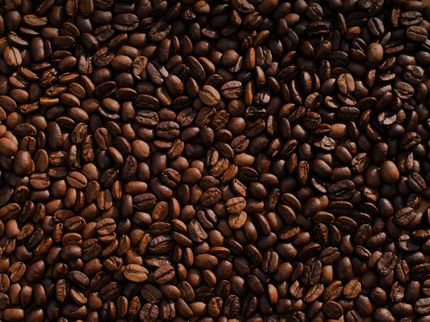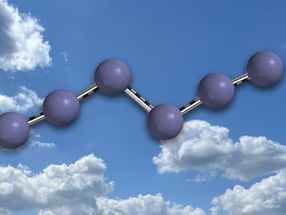Less bitter, just as satiating
A recent study by the Leibniz Institute for Food Systems Biology at the Technical University of Munich shows that less bitter-tasting pea protein hydrolysates can induce just as strong satiety signals in stomach cells as their more bitter counterparts. The key factor is that new bitter-tasting protein fragments are formed in the gastric juice during digestion, which stimulate the release of gastric acid and the neurotransmitter serotonin – both signals contribute significantly to the feeling of satiety in the body. The study results open up new perspectives for the development of plant-based foods that combine health, pleasant taste, and sustainability in a useful way.

First author Katrin Gradl at work in the cell culture lab of the Leibniz Institute for Food Systems Biology
photo: Joseph Krpelan / Leibniz-LSB@TUM
Pea protein hydrolysates are powders made from enzymatically or chemically broken down pea proteins. They consist of a mixture of small protein fragments, known as peptides, and free amino acids. They are currently gaining importance in food production because they are considered easily digestible, have a high-quality amino acid profile, and promote satiety.
“However, a major drawback is their often intense bitter taste, which many consumers dislike,” explains Katrin Gradl, first author of the study and doctoral candidate at the Leibniz Institute. “Our goal was therefore to find ways to overcome this taste barrier without losing the satiating effect of the products,” adds principal investigator Veronika Somoza.
The challenge
However, bitter peptides can trigger signals in the stomach that increase the feeling of satiety. Simply reducing the bitter taste of protein hydrolysates could therefore also reduce the satiety effect. “However, our previous studies with milk proteins had shown that such bioactive, bitter-tasting peptides do not necessarily have to be present in the starting product, but can also be formed in the gastric juice during digestion,” explains co-author Phil Richter from Veronika Somoza's team.
Against this background, the research team simulated the gastric digestion of a bitter and a less bitter protein hydrolysate using artificial gastric fluid and then analyzed the newly formed peptides.
Digestion products with a satiating effect
Using chemical and computer-assisted analysis methods as well as sensory tests, the research team identified three bitter peptides in each of the two digestion products. All six peptides stimulated the secretion of gastric acid and the release of serotonin in a human stomach cell line, regardless of the original bitterness of the product. “It was remarkable that the peptides from the less bitter-tasting hydrolysate stimulated serotonin release particularly strongly,” reports Katrin Gradl. In addition, the researchers demonstrated that two types of bitter receptors were involved in inducing satiety signals in the cellular test system.
Conclusion: Even less bitter-tasting pea protein hydrolysates can form bioactive peptides during digestion in gastric fluid, which induce satiety signals via bitter taste receptors. However, Veronika Somoza emphasizes: “Human studies are needed to definitively assess the influence of these peptides on human eating behavior and weight control.” Nevertheless, the study already reveals molecular mechanisms that can be used to optimize the taste of protein hydrolysates in a targeted manner—without limiting the satiating effects triggered by bitter-tasting compounds.
Original publication
Most read news
Original publication
Katrin Gradl, Phil Richter, Veronika Somoza; "Bitter peptides formed during in-vitro gastric digestion induce mechanisms of gastric acid secretion and release satiating serotonin via bitter taste receptors TAS2R4 and TAS2R43 in human parietal cells in culture"; Food Chemistry, Volume 482
Topics
Organizations
Other news from the department science

Get the food & beverage industry in your inbox
By submitting this form you agree that LUMITOS AG will send you the newsletter(s) selected above by email. Your data will not be passed on to third parties. Your data will be stored and processed in accordance with our data protection regulations. LUMITOS may contact you by email for the purpose of advertising or market and opinion surveys. You can revoke your consent at any time without giving reasons to LUMITOS AG, Ernst-Augustin-Str. 2, 12489 Berlin, Germany or by e-mail at revoke@lumitos.com with effect for the future. In addition, each email contains a link to unsubscribe from the corresponding newsletter.






























































